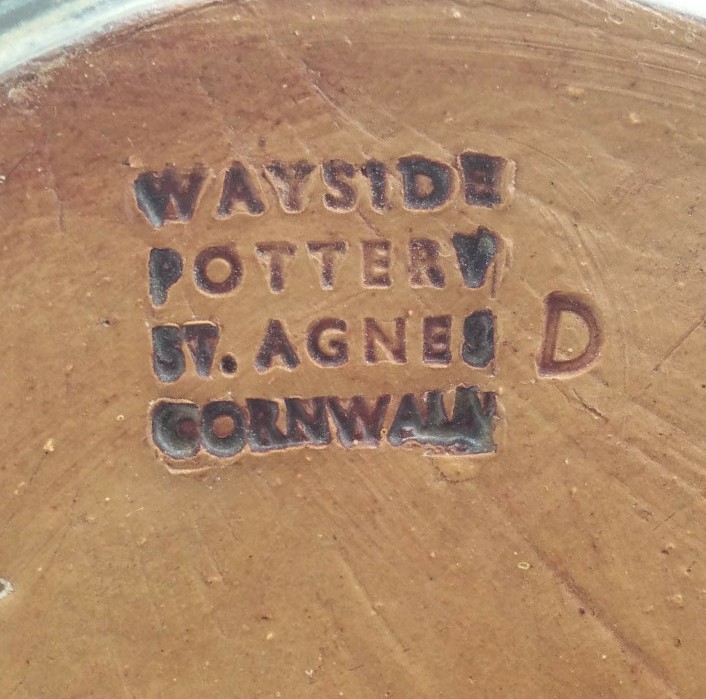Conundrums and extra marks – Griggs Forge, Fowey and St Agnes/Wayside Potteries
While Investigating John Varsey’s marks I’ve tried to unravel the time lines of several potteries which he either set up or took over, before selling them on to other potters. Varsey has been left out of the various editions of the Mark Book, and The Digital Museum of Cornish Ceramics is an excellent resource but a bit vague on dates and marks…
Firstly, Griggs Forge:
Vasey set up Griggs Forge Pottery in the 70s which he sold to Bill Moran who in turn sold it on to Arthur Walford (all of whom have been left out of the various editions of the British Studio Potters’ Marks books).
At one point the stamp ‘Griggs Pottery’ was used, sometimes in conjunction with ‘Cornwall’, so at least we have an indication that it was from Griggs Forge rather than someone called Griggs from another part of the country. Various resellers have attributed the stamp to Bill Moran or Vasey. Moran seems the logical choice since Vasey commonly used a ‘JV’ mark in a circle and a ‘Griggs Forge’ stamp on his pots while he potted there, while Arthur Walford uses a written ‘Griggs Forge C/Wall’ mark on his, or no mark at all. I will add this one to the database under Bill Moran’s entry as it’s the closest I’ve come to finding any of his work, albeit with the proviso that it’s unverified.
There is also the Pottery’s ‘GF’ stamp in a circle on The Digital Museum of Cornish Ceramics web page. They haven’t assigned it to any particular potter at Griggs Forge so for the time being I’ve added it to Arthur Walford’s entry.
Plus a stamped ‘Griggs Forge Cornwall’ in an oval shaped mark, that is unlike Vasey’s stamp, and the decoration is more akin to later pots from that pottery. It might be Moran’s mark, or it might be an early one of Walford’s. Either way I’ve added it to Moran’s entry.
I hope to contact the potters directly if they are still around, and will update the entries with their replies in due course.
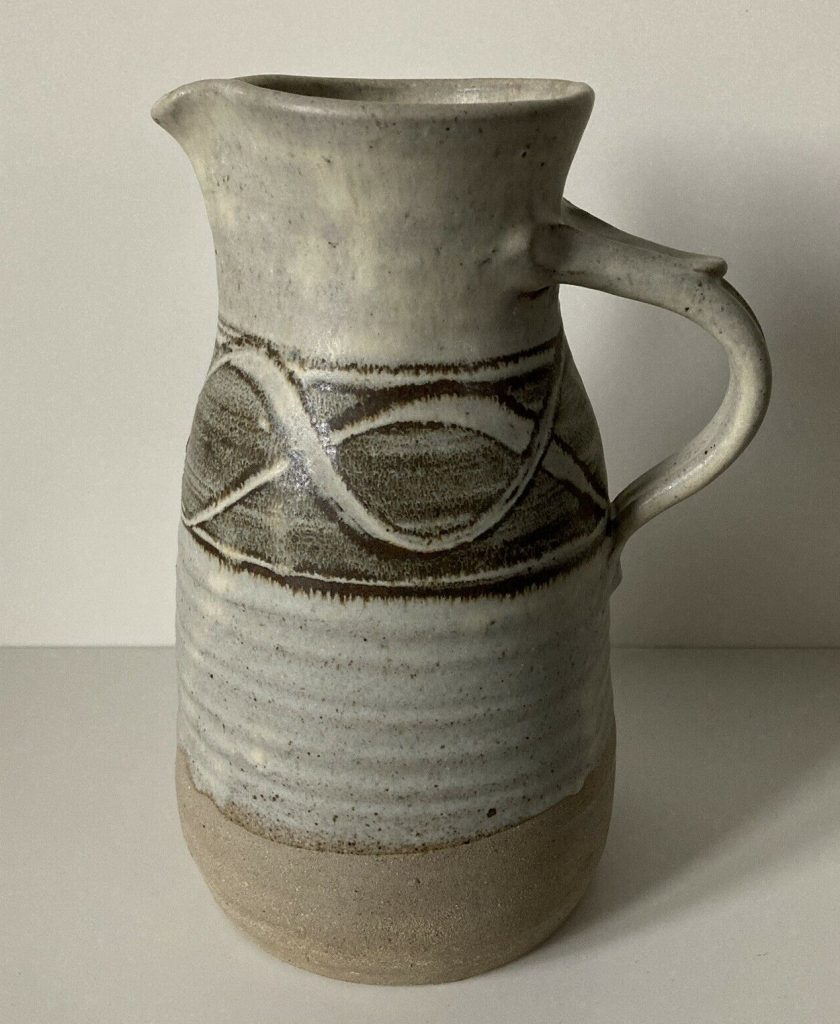
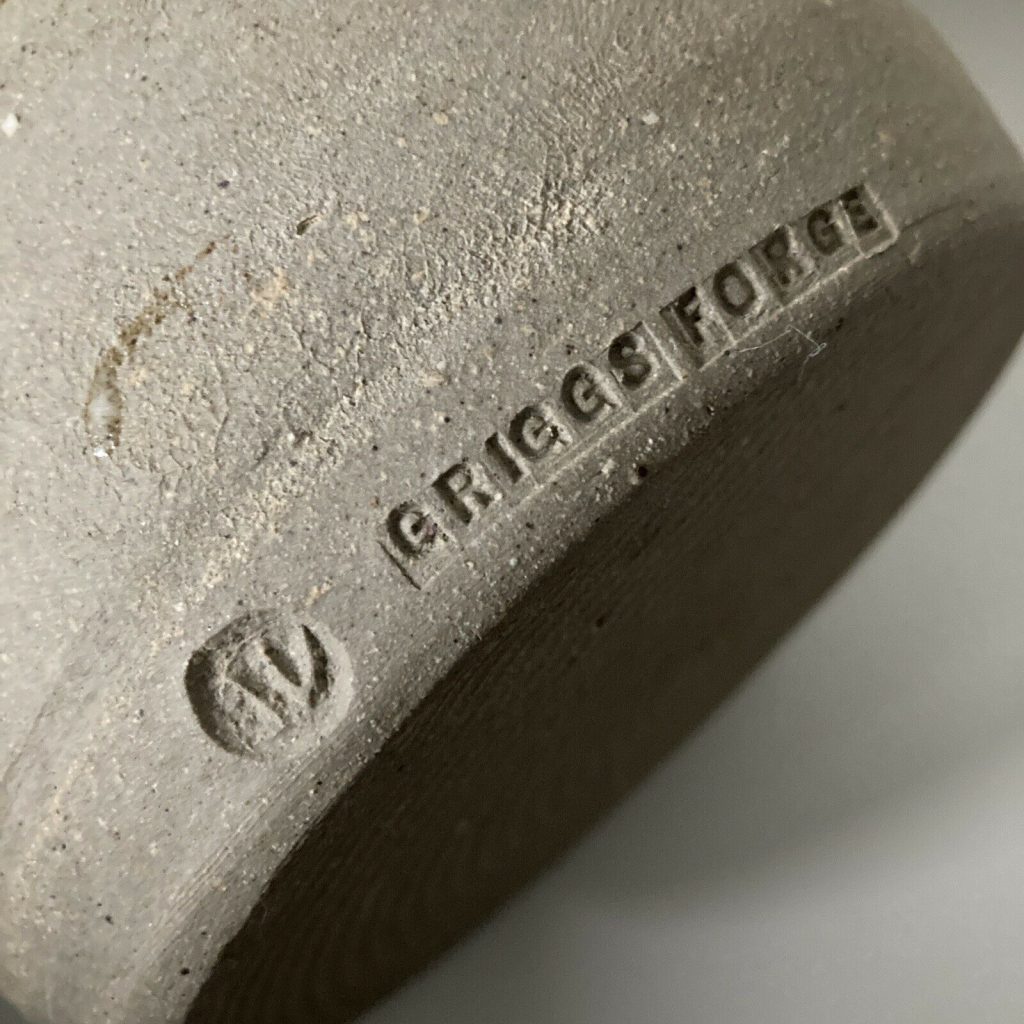
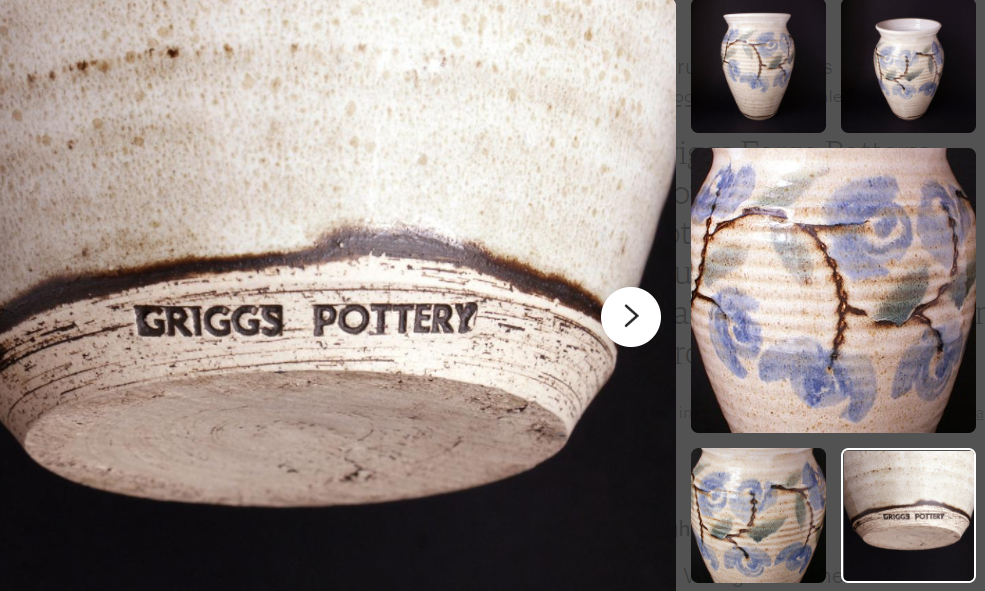
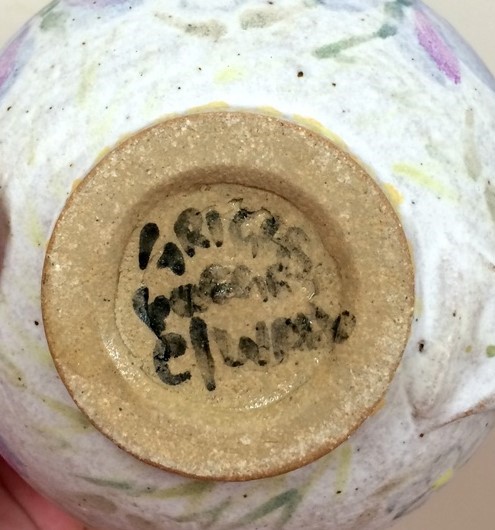
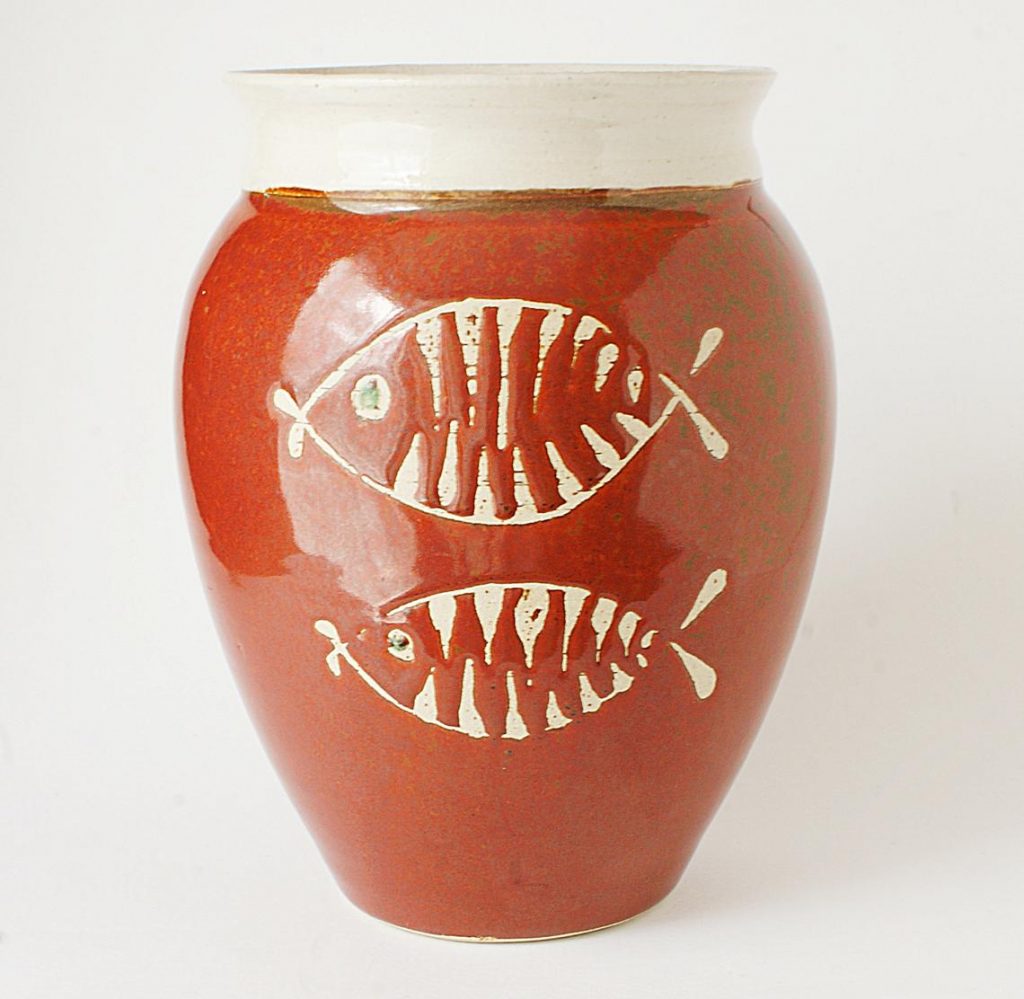
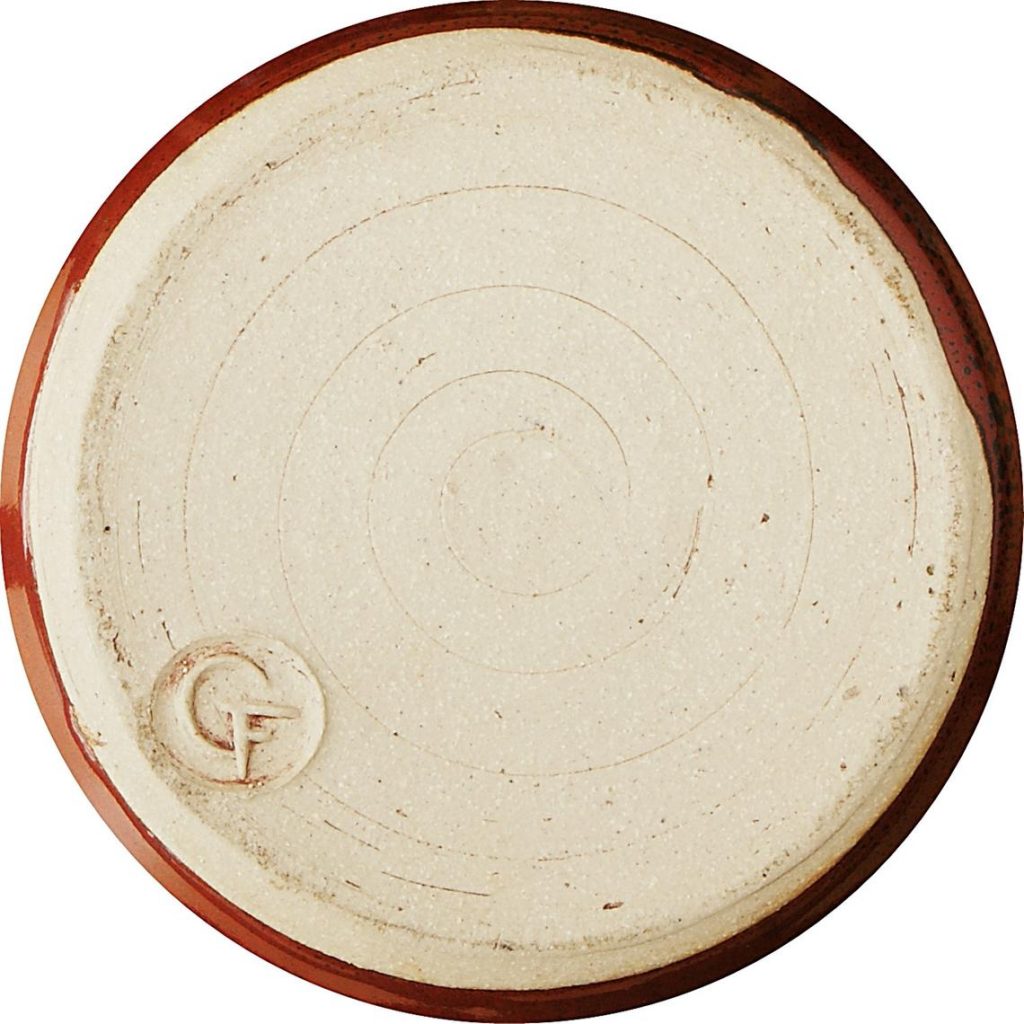
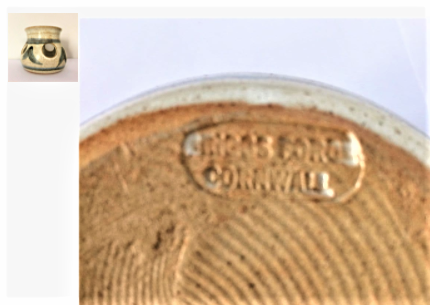
Secondly, Fowey Pottery:
Vasey was only there a few years in the 70s, between Griggs Forge and St Agnes. I haven’t found a verified example of Vasey’s work from Fowey, but it’s possible that some of his pots bearing just his ‘JV’ in a circle mark are from his time there, or it could be the ones with his incised ‘John Vasey’ signature.
Robert (Bob) Weston (another potter missing from the Marks book) now runs the Pottery and stamps his pots ‘Fowey’ or ‘Fowey’ and ‘RW’. I’m up to the Wa’s in the database so Weston will be added shortly.
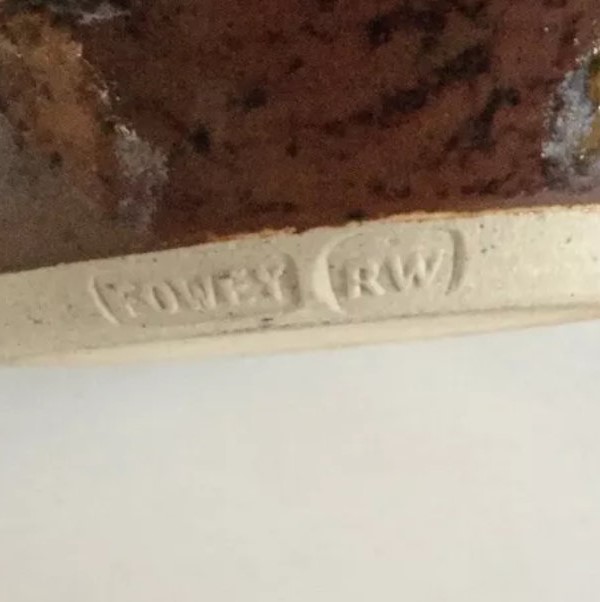
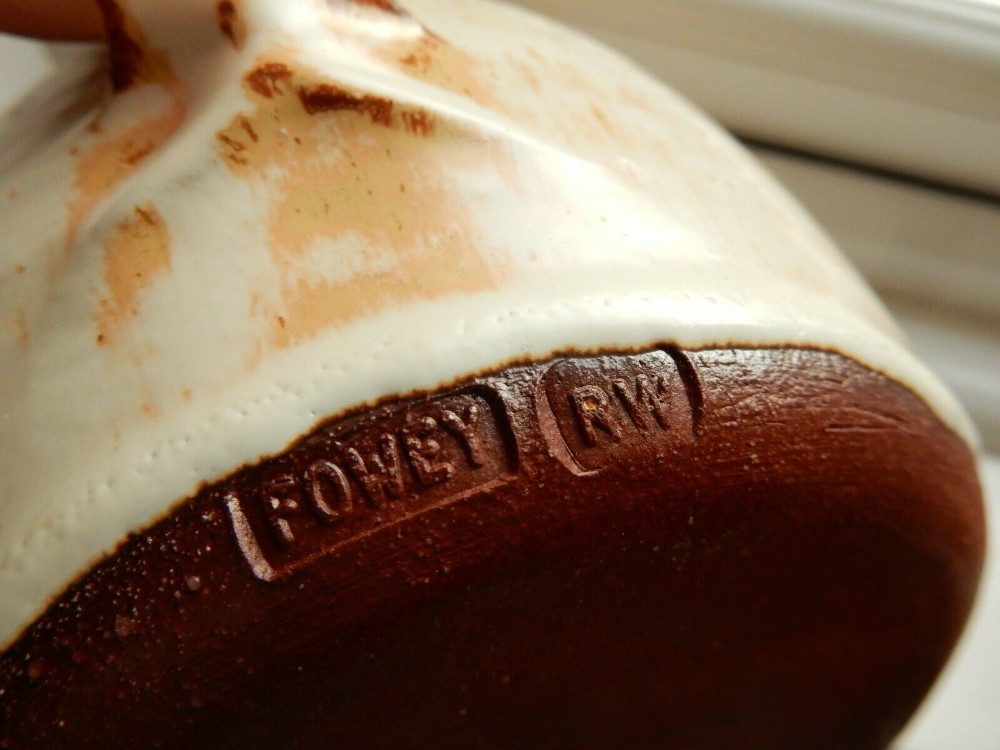
Thirdly, St Agnes Pottery:
Varsey took over the Wayside Pottery premises at St Agnes from John and Sue Sneddon in 1978 when they emigrated to the US. Vasey’s stamps feature the words ‘St Agnes Cornwall’ prefixed with ‘J.V.’ It appears that those pots with just ‘St Agnes Pottery’ could be by John & Sue Sneddon. I’ve recently been contacted by a potter who knew the Sneddons to say the wavy decoration found on such pots is by them. Vasey use a similar style of decoration at Griggs Forge (see jug photo, above) but it seems to have been a 70s style that a number of potters copied, which makes categorising the pots that much more difficult.
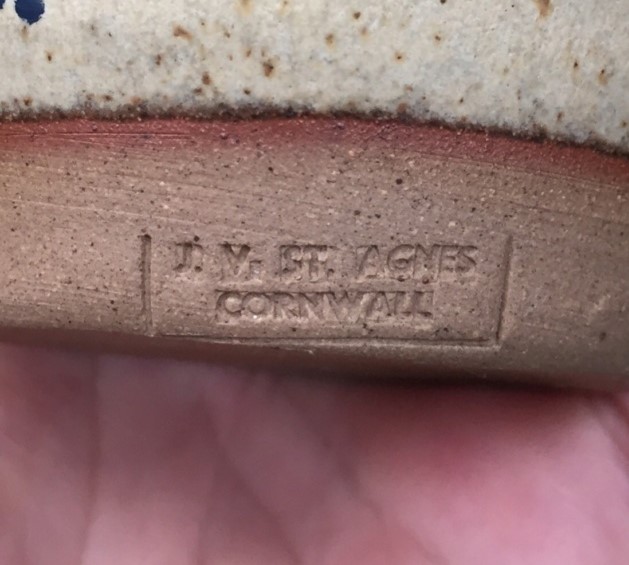
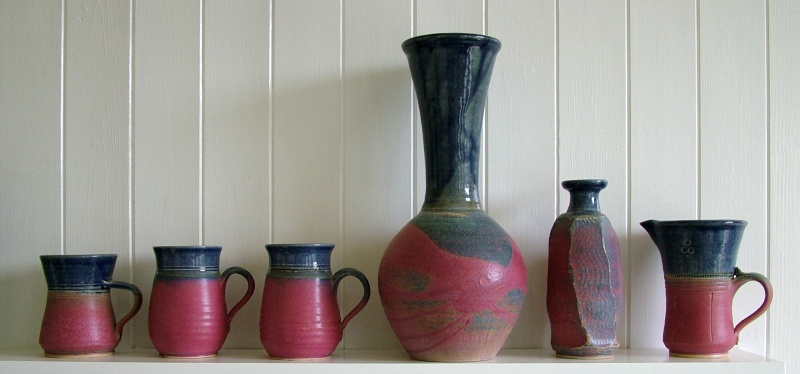
John and Sue Sneddon had been potting there since the 1960s, presumably taking over from Arthur and Nancy Homer (listed as A&N Homer in the BSPM book, but the Sneddons aren’t in the book). The Sneddons used just a paper label, or a St Agnes Pottery stamp, or a stamp featuring a building that represented an old tin mine engine house – I’ve recently found one with a label.
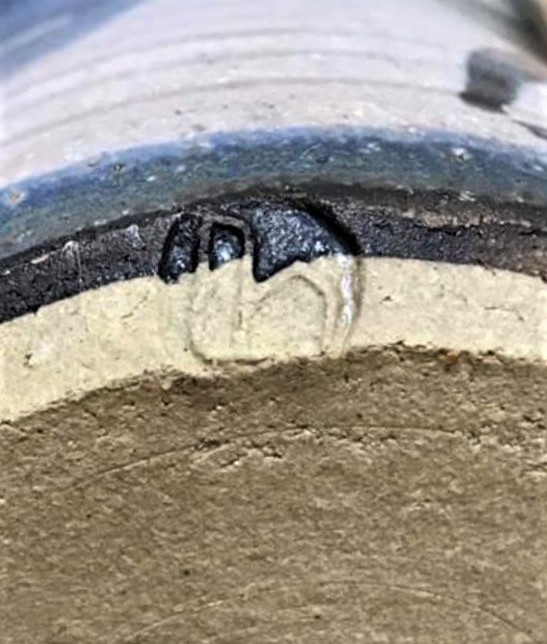
The Homers had potted there from 1952-57 and used an ‘AS’ stamp, and/or an ‘NH’ stamp, before Nancy gave up potting and turned to painting full time. There’s a possible example of Nancy’s NH mark in the 20thCenturyForum website. Not sure what happened to Arthur. He’s reputed to have invented the ‘Arthur Homer’s reverberating furnace’, a patent design of gas or oil kiln, so hopefully nothing bad.
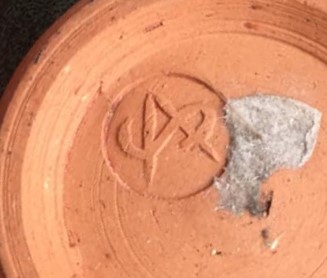
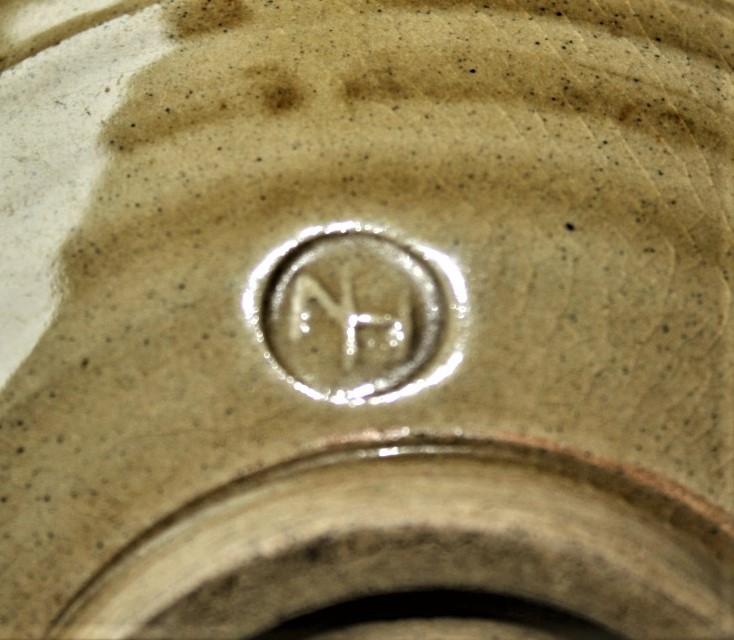
There is an extra mark: ‘Wayside Pottery St Agnes Cornwall’. It doesn’t fit any of the 3 sets of potters mentioned above, who occupied the premises after the War, and the style of some of the pots are more akin to the 20s-30s. I’ve since come across an entry on the St Agnes Museum website about the Bulkley sisters who occupied the Wayside premises in the 1920s-50s before the Homers moved in:
“The Bulkley sisters, Annette (b.1868) and Helen (b.1870), had moved permanently to St Agnes in about 1922, making pottery and founding their studio at Wayside, which continued until at least 1937. The Museum has several examples of Helen’s work, in its characteristic chunky style and vibrant turquoise colour (obtained from local copper which she sought out herself) but had no examples of Annette’s work until now. Possibly her output was less as she became very involved in caring for the countryside around St Agnes. She was a Committee Member of the St Agnes Countryside Protection and the Old Cornwall Society, and in 1934 was one of the honorary secretaries when the Council for the Preservation of Rural England fought to prevent housing being built on open spaces nearby, including at the iconic St Agnes Head. Annette died in 1944 and Helen in 1955. They gave Wayside and their two cottages to the National Trust who continues to own them to this day.”
The Digital Museum of Cornish Ceramics says that Vasey occupied Wayside Pottery for just a few years before passing it to the National Trust and moving up the road to new premises in the village where he is still based. Presumably the Homers, Sneddons and Vasey were all renting the property from the National Trust.
Anyway, mystery solved. I can now make a separate entry on the database for the Bulkley sisters and their Wayside Pottery in St Agnes.
